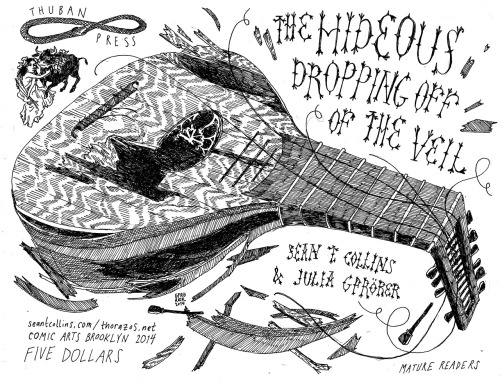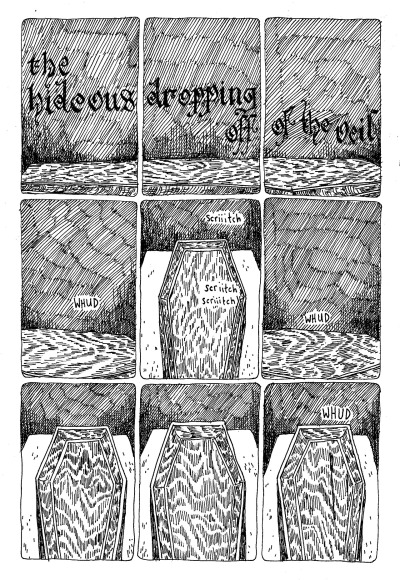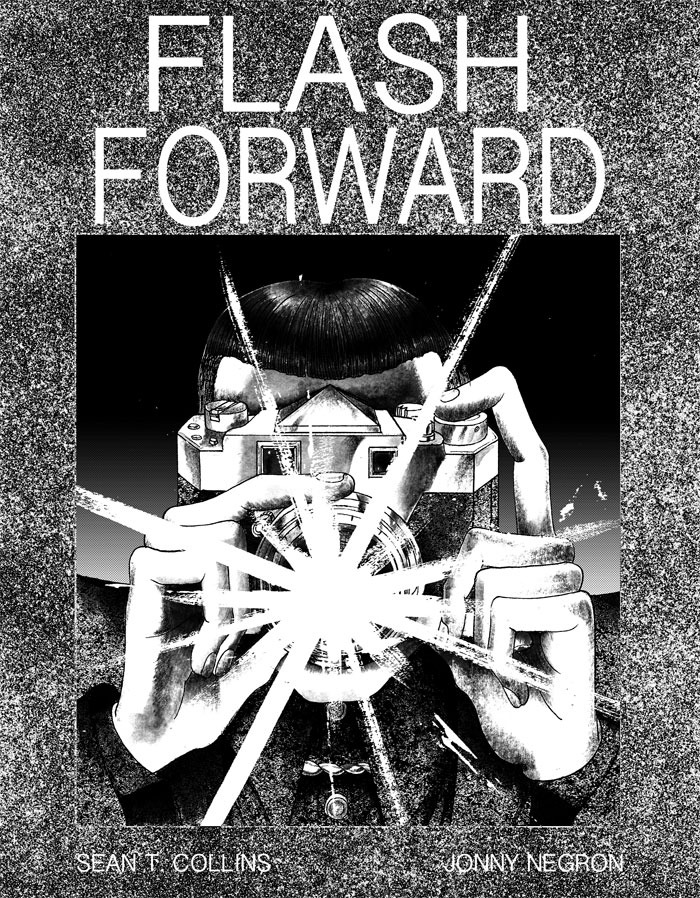Archive for November 25, 2014
“Gotham” thoughts, Season One, Episode Ten: “LoveCraft”
November 25, 2014Any superhero story requires a certain suspension of disbelief. We’re not even talking about the secret origins and incredible powers here, mind you — a culture that can accept Matthew McConaughey as an astronaut can handle a few radioactive spiders, green power rings, and super-soldier serums with no problem. The real storytelling stretch that superhero stories ask their audiences to accept is one of basic human behavior. After all, no billionaire has ever spent their ducats to become a masked, armored vigilante, fighting crime in a gaudy costume under a nickname ending in “-man.” A good caped-crusader story — even one like Gotham, which several crusaders but no actual capes — convinces you that “well, yeah, no one acts like that…but what if they did?” is a question worth asking.
By that standard, Fox’s year-one prequel to the Batman story not a good superhero story. Oh, it’s a fun romp, from time to time anyway. As it approaches the mid-season mark under showrunner Bruno Heller, it’s created a more visually entertaining Gotham City than Christopher Nolan’s dour concrete canyon, a place where buildings, bridges, burlesque clubs, even bathrooms are just a bit bigger than our workaday world’s. The score, by Graeme Revell and David E. Russo, is similarly souped up, swelling and humming and clanging and making everything feel, well, like a comic book. (That’s a compliment where I come from.) The setting looks and sounds like a world where a man who dresses up like a bat and punches evil clowns would fit right in.
But tonight’s episode, “LoveCraft,” reveals a fundamental problem with Gotham’s tone: Evil clowns, sure, bring ’em on. Larger-than-life heroes who battle injustice in spectacular style? Not so much. With a lack of actual bona fide Batman built right into the premise, the show pitch-shifts real life up a few octaves, sure, but almost always in an unpleasant direction. What should feel camply thrilling, and often does in the moment, winds up leaving you feeling as dirty as Harvey Bullock looks.
The Boiled Leather Audio Hour Episode 34!
November 24, 2014Around the World: Discussing “The World of Ice and Fire”
We’re back, and a world awaits! Released with deserved fanfare a few weeks ago, The World of Ice and Fire, the long-awaited world book by George R.R. Martin and his co-authors Elio M. García Jr. and Linda Antonsson of Westeros.org, has proven to be an extraordinarily fecund source of information, speculation, and general wonderment. That’s a pretty fair characterization of this episode of The Boiled Leather Audio Hour, as a matter of fact: No muss, no fuss, just me and Stefan the best and most baffling moments of this extensive fake history in our biggest episode yet.
But before you begin, a quick housekeeping note: Stefan and I haven’t been able to record a podcast since July, as a series of professional, personal, and (most insurmountably) technical issues scuttled half a dozen different scheduled recording times. The resolution of these issues necessitated the purchase of a whole new computer and set of software, which I was happy to do, but which obviously took a hefty chunk out of the old Boiled Leather budget.
So if you enjoy The Boiled Leather Audio Hour, boiledleather.com, The Nerdstream Era, or any of our assorted projects, please consider clicking here to donate a few dollars to help offset the cost of the show via PayPal. (There’s also a Donate button at the top of boiledleather.com.) You all have been so tremendously complimentary and supportive, and we’re extraordinarily grateful that you listen!
Sean’s Rolling Stone article: The 10 Craziest Things We Learned from The World of Ice and Fire
Stefan’s “ruminations” on TWoIaF for Tower of the Hand
HuffPost Livin’
November 24, 2014I’ll be talking The Comeback, The Newsroom, The Affair, and Homeland on @HuffPostLive today at 5pm. Tune in here!
“The Comeback” thoughts, Season Two, Episode Three: “Valerie Is Brought to Her Knees”
November 24, 2014My skin is crawling and I’ve never felt more alive.
This, verbatim, was my reaction the first time I watched The Comeback just two short weeks ago. Actually, it followed an all-caps rant on my twitter feed to the effect of OH MY GOD WHY DID NONE OF YOU TELL ME TO WATCH THE COMEBACK BEFORE. A mockumentary in which the protagonist occasionally realizes the joke is on her and visibly chokes back tears? Where have you been all my life?
As the kind of person who could only like This Is Spinal Tap more if the “Stonehenge” sequence had been followed by an unbroken two-minute shot of David St. Hubbins having a backstage breakdown upon realizing his entire life was a miserable failure, this was manna from heaven for me. Its trick is that by forcing you to experience the humiliations of Valerie Cherish asgenuinely humiliating, with all the barely tamped-down misery that entails, instead of just as joke fodder, the show is actually more empathetic to her suffering, and harsher on the sexist system of celebrity that inflicts it.
So you can keep your Liz Lemons and your Leslie Knopes and their adorkably heartwarming/heartwarmingly adorkable tumblr gifsets—I wear all black all the time, for god’s sake. Give me Valerie Cherish auditioning for a role designed to tear her to shreds because it’s the only role she can get. I want comedy that hurts. If it comes in a pastel track suit, so fucking be it. And from what I’ve managed to see so far (the three extant episodes of Season Two and about half of Season One, which I’m HBOGoing as fast as my internet service provider can handle it), few episodes of The Comeback have been quite this painful.
Hooray, I’m reviewing The Comeback for the New York Observer now! Thanks to Drew Grant for giving me this chance to SHINE!
The HuffPost Comeback
November 17, 2014I’ll be talking The Newsroom, The Comeback, The Affair, and Homeland on @HuffPostLive at 4:50pm. Tune in here!
The Hideous Dropping Off of the Veil is now available for purchase
November 12, 2014“Is there anything more tragic than such a scene of failed self-erasure, when we are reduced to the obscene slime which, against our will, persists in the picture?” (Slavoj Zizek, The Thing from Inner Space)
“Jesus Christ.” (Tom Spurgeon)
A meditation on fucking as the final integrative attempt of a flagging psyche, on the refusal of the sensual half of the self to be repressed. It also includes incest, voyeurism and attempted murder. This comic was scripted by Sean T. Collins, and drawn by Julia Gfrörer, based on “The Fall of the House of Usher” by Edgar Allan Poe. It contains pornographic imagery and is intended for mature audiences. Xerox printed on lavender text weight paper, saddle stitched, 24 pages, $5.
https://www.etsy.com/listing/210813489/the-hideous-dropping-off-of-the-veil
Buy yourself a copy of the new comic Julia and I made! It’s filth, just as Edgar Allan Poe intended.
Comics Time: Earthling
November 12, 2014Aisha Franz’s faces are an architectural marvel. Their features bunch up in the center of great round white circle heads crowned with hair that looks sculpted from clay. They’re bookended by apple cheeks drawn with a perpetual blush rendered as circular gray scribbles, as though a physical ordeal or an uncomfortable emotion were always only scant seconds in their past. Eyebrows, wrinkles, creases, and smile lines push the eye toward the beady eyes and pug noses they ring. (The look is very Cabbage Patch Kids, but there’s a reason those weird-looking things made millions.) They broadcast emotion from the center of the head like a spotlight focused down into a laser — curiosity and confusion, peevishness and puckishness, boredom and loneliness and anger and, very occasionally, satisfaction and delight. In a book where Franz’s all-pencil style — the lack of inks and the deliberately boxy and rudimentary props and backgrounds suggesting a casual, tossed-off approach completely belied by Franz’s obvious control of this aesthetic — works very well, those faces work best of all.
The story is another matter.Earthlingtells the not-quite-multigenerational tale of a suburban mother and her two daughters — one on the cusp of puberty, the other of college. The book derives its title from the storyline of the younger daughter, who encounters and attempts to befriend an alien visitor she hides in the toy chest in her room. But it’s equally concerned with her older sister, who’s negotiating the needs of an estranged best friend, a physically eager but emotionally aloof suitor, and an absent father whose scheduled return is impending; and with their mother, who alternately seeks to discipline and connect with them while pondering a turning point in her own past. None are happy; all deal with their unhappiness alone. That’s the only choice allowed them in the book’s closed emotional system. Franz casts every supporting character as mean, manipulative, or oblivious. She paints her protagonists with a similar palette, or at least portrays them as so fixated on their own difficulties that they are useless to one another. Thus the storytelling deck is stacked against each to such a degree that we are forced to come to the same conclusions they do: no one understands them, the situation is hopeless, and only rash renunciations of responsibility or intercession by a well-timed savior can liberate them. Perhaps inadvertently,Earthlingteases out the undercurrent of narcissism that those of us who suffer from depression often suspect, and fear, helps fuel those gray-pencil periods in our lives, but only to reinforce it.
Comics Time: The Basil Plant
November 12, 2014As an object, The Basil Plant is not much to look at. The same can’t be said of author Laura Lannes’s cartooning — as economical and as energetic as a well-delivered joke, with a thick, versatile line, and figurework that alternately recalls Anders Nilsen and Gabrielle Bell as played for laughs. The package containing that cartooning, however, is a bog-standard staple-bound minicomic, about 4.5″ x 3.5″, black and white, xeroxed, one page = one panel, its sole two-page spread not even located in the center of its 28 pages. You’ve seen a million of these things if you’ve been to a single small-press show. If you pick it up with the intention of reading it, you’re probably disinclined to be impressed. This is because you’re a sucker, which is what Lannes is counting on. The Basil Plant relies on your belief that you know what you’re in for. You think you know, but you have no idea.
I reviewed The Basil Plant by Laura Lannes for The Comics Journal.
STC @ CAB; The Hideous Dropping Off of the Veil
November 7, 2014Come see the total fucking dreamboat pictured above, yours truly, at Comic Arts Brooklyn tomorrow! This year’s CAB will see the debut of The Hideous Dropping Off of the Veil, a new pornographic comic inspired by Edgar Allan Poe’s “The Fall of the House of Usher,” written by me and drawn by Julia Gfrörer. It’s a follow-up to our previous Poe porn collaboration, In Pace Recquiescat (based on “The Cask of Amontillado”), which will also be there, along with everything else Julia’s done lately. I’ll have copies of Flash Forward by me & Jonny Negron, too.
The show runs from 11am-7pm at Our Lady of Mt. Carmel Church, 275 N 8th St., in Brooklyn. Come find me at table U28, where I’ll be spending a bunch of time alongside Julia and Michael DeForge; I’ll be easy to spot as the third-sexiest person at the table. Hope to see you there!
The 10 Craziest Things We Learned from “The World of Ice and Fire”
November 3, 20142. Tywin Lannister was an even bigger bastard than we thought.
Before he became the not-so-proud patriarch of the dysfunctional Lannister clan, the future Lord Tywin was a fed-up heir trying to clean up his weak father’s messes. As you might expect from the future architect of the Red Wedding, this mostly involved killing a lot of people. The most famous incident involved Tywin’s slaughter of every last man, woman, and child from House Reyne, who’d risen in rebellion against their Lannister overlords. In both the books and the show, Tywin’s revenge was immortalized in the song “The Rains of Castamere”; the HBO series has featured versions by both the National and Sigur Ros, and when the band at the Red Wedding started playing it, that was the tip-off that the shit was about to hit the fan.
But we’d never learned the specifics of the massacre until now, and they’re somehow even more cold-blooded than the song made it sound. Castamere, the Reynes’ castle, was a mostly subterranean stronghold, extending deep underground into the old gold and silver mines through which the house had made its fortune. When Tywin attacked, the Reynes and their followers retreated underground, thinking the complex below was impervious to assault. It was — but it wasn’t waterproof. Tywin had his men redirect a river into the few remaining cracks and crevices. Tywin’s rain washed the Reynes right out of existence.
| The 10 Craziest Things We Learned From ‘The World of Ice & Fire’ | Rolling Stone
I wrote up a list of weird, wild, wonderful stuff from The World of Ice and Fire for Rolling Stone. In other words, the publication that gave us Hunter S. Thompson paid me to write about Sothoryos. This is bat country! |








